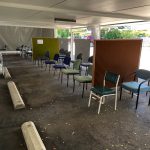Income squeeze’s insidious effects
By the AGPA web team
General practice registrars are finding it difficult to make ends meet, with nearly a third of them taking second jobs, the General Practice Registrars Australia benchmark survey released this month (March 2021) finds.
The root causes of that are worth exploring. It is far too easy so blame practices for not paying enough.
The survey is done every two to three years. In the latest survey, about half of the 400 registrars said they were unhappy with their pay and unhappy with their ability to negotiate pay and conditions with the practices in which they work.
The base salary for a first-year general practice registrar is $76,500.
Nearly all the second jobs are part-time or sessional in the medical area. Nonetheless, it must put enormous strain on the registrars.
One immediate cause for increased dissatisfaction of registrars is a Covid-related downturn in income for everyone in general practice as patients stayed away. The solution was tele-medicine. But that all had to be bulk-billed, lowering income all round, including income over and above their salary that registrars could earn from seeing patients. Also, it was more difficult for registrars and newer practitioners to build a patient list through telemedicine as patients were more comfortable over the phone with a GP they already knew well.
That said, registrar dissatisfaction with pay and the lack of capacity of practices to pay them more underscores a much more deep-seated malaise in the system.
GPRA recognises that it is not a question of the practices just not paying enough. It says the practices are under a lot of financial strain. It estimates that a practice paying a registrar the present rate would be making a loss on that consulting room.
The financial pressure goes back eight years when the Federal Labor Government imposed a cost-saving on Medicare by a one-year freeze on the indexation of the Medicare rebate.
The Coalition extended it again and again until by July 2020 the indexation freeze had “saved” the Federal Government a total of nearly $5 billion, less about $1 billion when the Turnbull Government introduced indexation and partial indexation in 2017-18. This means that, between 2013 and 2020, about $4 billion has been taken from Medicare, the great bulk of which is from general practice. And it is rising because that indexation freeze has not been restored and its effect continues each year There is a snowballing effect.
It gets worse, in July 2020 the Medicare indexation was just 1.5%, but the CPI was running at 2.2%.
Even if the rebate were fully indexed, it would still mean doctors’ income would be going backwards compared to all other income-earners because the true comparative measure should be wage indexation or income indexation. In the past few years that has been only slightly higher than CPI, but in the years before that and in the long-term it has been significantly higher.
That has contributed to the long-term comparative decline in doctors’ incomes.
Moreover, CPI is not a true indicator of increasing costs to general practices. Often the health-price index is higher than CPI, and certainly the price of health consumables is higher than CPI.
The AGPA web team estimates that if the indexation freeze on the Medicare rebate had not happened, for every $1 million of practice income being received now there would be an extra $110,300.
The registrars are right to be concerned about financial pressure, but the real cause is not the immediate relationship with the practice that hires them, but the slow but relentless squeeze on the money coming into the system.
The exponential effects of what seem like small numbers – between 0.5% and 3% a year CPI – are not well-understood.
The AGPA web team estimates that, if the indexation freeze on the Medicare rebate had not happened, for every $1 million of practice income being received now there would be an extra $110,300 – enough to substantially relieve the financial capacity for practices to hire and increase the pay of GP registrars, among other things.
And it goes up year after year because even if full indexation is restored, it would not include indexing that $110,300.
True, that $110,300 has to be discounted somewhat because many practices would have increased patient charges to make ends meet.
A side effect of that, of course, is a further burden on the system as more patients cannot or will not pay higher gap fees and instead go to hospital out-patients, thereby adding unnecessary costs to that system which should be geared to emergencies, not primary care.
A further insidious erosion is also taking place. The assessment of the payment for any new Medicare items (such as the Covid vaccine and tele-medicine) is made with the background of a lower base overall and therefore the assessment is lower than it would otherwise be.
Until that historic freeze on Medicare rebates is fully restored and back-dated the sort of pressure on the system that causes the woes with GP registrars and pressures on hospitals will never be fixed to the overall detriment of practitioners and patients alike.

Leave a Reply
Want to join the discussion?Feel free to contribute!